The Sagrada Familia, a masterpiece designed by the visionary architect Antoni Gaudí, stands as one of Barcelona's most iconic landmarks. Its unique blend of Gothic and Art Nouveau styles has drawn millions of visitors and admirers from around the world, eager to witness its breathtaking façade and intricate details.
In this article, we will explore The Remarkable History of Sagrada Familia: A Brief Overview of Barcelona's Iconic Landmark, tracing its origins, architectural innovations, and the ongoing journey of its construction. This magnificent basilica not only represents Gaudí's artistic genius but also symbolizes the enduring spirit of Barcelona’s cultural heritage.
The Architectural Genius Behind Sagrada Familia: Gaudí's Vision
Antoni Gaudí’s architectural vision for the Sagrada Familia transcends traditional design, embodying a profound connection between nature and spirituality. His approach was characterized by the use of organic forms and vibrant colors, which can be seen in the basilica’s towering spires and intricate façades. Gaudí believed that architecture should reflect the beauty of the natural world, leading to structures that harmonize with their surroundings.
One of the most remarkable aspects of Gaudí's design is his innovative use of geometry. He employed various shapes, including hyperboloids and parabolas, to create the stunning visual effects that define the Sagrada Familia. This unique structural framework not only enhances its aesthetic appeal but also ensures stability, a testament to Gaudí's genius. Key elements include:
- Natural light: The stained-glass windows filter light to create a kaleidoscope of colors inside the basilica.
- Verticality: The towering spires symbolize a connection to the divine, reaching towards the heavens.
- Symbolism: Each façade reflects different aspects of Christ’s life, integrating religious themes into the architecture.
Gaudí’s meticulous attention to detail is evident in every corner of the Sagrada Familia. He often drew inspiration from natural patterns, using elements such as tree branches and flowers to decorate the basilica. This artistic choice not only enhances the visual experience but also invites visitors to appreciate the intricate relationship between art and nature.
Despite Gaudí's untimely death in 1926, his visionary ideas continue to guide the ongoing construction of the Sagrada Familia. With modern technology, architects strive to realize his original intentions, ensuring that Gaudí's legacy remains a vital part of Barcelona’s cultural landscape. The basilica stands as a testament to the enduring power of creativity and innovation, inspiring generations to come.
The Evolution of Sagrada Familia: From Concept to Construction
The evolution of the Sagrada Familia began in 1882, initially envisioned as a traditional Gothic church. The first architect, Francisco de Paula del Villar, aimed for a simpler design, but it was not until Antoni Gaudí took over in 1883 that the project transformed into its current ambitious form. Gaudí’s vision incorporated elements of Art Nouveau and nature, setting the stage for a revolutionary architectural journey.
Throughout the years, the construction of Sagrada Familia has faced numerous challenges, including shifts in artistic direction and external factors such as the Spanish Civil War. Gaudí focused on creating a structure that would evolve organically, which led to the adoption of innovative techniques and materials. Key phases of construction include:
- Foundation work: Early efforts established a solid base, crucial for the towering structure.
- Facade design: Each of the three principal facades—Nativity, Passion, and Glory—was conceptualized with distinct thematic elements.
- Expansion of spires: Gaudí aimed for 18 spires, representing the apostles, evangelists, Mary, and Jesus, which would dominate the skyline.
As the project progressed, Gaudí's intricate detailing and use of symbolism became more pronounced. His designs reflect a deep connection to Christianity, which is conveyed not only through the façades but also through the interior space. The innovative use of shapes and light creates an atmosphere that is both engaging and spiritual.
Today, the Sagrada Familia remains a work in progress, with an estimated completion date set for 2026, marking the centenary of Gaudí's death. The ongoing construction reflects a blend of traditional craftsmanship and modern technology, ensuring that Gaudí's original vision is honored while adapting to contemporary needs. This remarkable evolution of the Sagrada Familia embodies the enduring spirit of creativity and dedication that defines Barcelona.
Key Milestones in the History of Sagrada Familia
The construction of the Sagrada Familia officially began on March 19, 1882, marking the start of an ambitious project that would take over a century to come to fruition. Initially designed by Francisco de Paula del Villar, the project took a transformative turn when Antoni Gaudí assumed leadership within a year. His vision redefined the original plans, integrating unique architectural elements that would set the Sagrada Familia apart as a global icon.
Throughout its history, the Sagrada Familia has undergone several key milestones, each contributing to its unique architectural identity. Some notable events include:
- 1908: Gaudí began work on the Nativity Façade, filled with intricate sculptures symbolizing the birth of Christ.
- 1936: The Spanish Civil War interrupted construction, causing significant damage to Gaudí's original models and plans.
- 2005: The Sagrada Familia was designated a UNESCO World Heritage Site, recognizing its cultural significance and architectural greatness.
- 2026: The anticipated completion date, coinciding with the centenary of Gaudí's death, aims to fulfill Gaudí's original dream.
In the 21st century, the Sagrada Familia has embraced advanced technologies to continue its construction while staying true to Gaudí's original designs. Computer-aided design and 3D printing have played crucial roles in reproducing his intricate details, ensuring that the basilica evolves with modern innovation while honoring its historical roots. This blend of tradition and progress reflects the enduring legacy of Gaudí's vision.
As the Sagrada Familia approaches completion, its rich history continues to inspire awe among visitors and architects alike. The basilica stands not only as a masterpiece of religious architecture but also as a symbol of human creativity and perseverance, embodying the spirit of Barcelona and its commitment to artistic excellence.
Cultural Significance of Sagrada Familia: A Symbol of Barcelona
The Sagrada Familia has transcended its role as a mere architectural marvel to become a cultural symbol of Barcelona. As one of the most visited monuments in the world, it reflects the city’s identity and is a source of pride for its residents. The basilica embodies the artistic spirit that defines Barcelona, showcasing the innovative genius of Antoni Gaudí while standing as an enduring emblem of creativity and perseverance.
Its intricate detailing and powerful symbolism resonate with both locals and tourists, who find in the Sagrada Familia a representation of their cultural heritage. The basilica is not only a place of worship but also a cultural hub that hosts events and exhibitions, further solidifying its significance within the community. Visitors often remark on the spiritual atmosphere that permeates the space, highlighting the universal themes of hope and aspiration it represents.
Moreover, the Sagrada Familia serves as a constant reminder of the importance of artistic expression in society. It inspires countless artists, architects, and thinkers to explore their own creativity, encouraging a dialogue about the intersection of art and spirituality. This landmark stands as a testament to the transformative power of architecture, where each stone tells a story and each façade conveys deep meaning.
As construction continues toward its completion, the Sagrada Familia remains a living project, symbolizing the ongoing evolution of Barcelona’s cultural landscape. It invites future generations to engage with its history and artistry, ensuring that its significance will endure for years to come. Through its breathtaking design and profound symbolism, the Sagrada Familia continues to captivate hearts and minds, solidifying its status as an irreplaceable icon of the city.
Visiting Sagrada Familia: What You Need to Know
When planning your visit to the Sagrada Familia, it's essential to consider the ticketing options available. You can choose between several types of tickets, including basic entry, guided tours, and even access to the tower for a panoramic view of Barcelona. It’s recommended to purchase your tickets online in advance to avoid long queues, especially during peak tourist seasons.
Another important aspect to keep in mind is the opening hours. The basilica is generally open to visitors from 9:00 AM to 8:00 PM, although these hours may vary depending on the time of year or special events. Make sure to check the official website for the latest updates regarding accessibility and any planned closures that might affect your visit.
Once inside, take your time to explore the stunning interior. The Sagrada Familia features an array of stunning stained-glass windows that create a mesmerizing play of light throughout the basilica. You can also participate in audio-guided tours that provide fascinating insights into Gaudí’s architectural choices and the symbolic elements present in the structure, enhancing your overall experience.
Lastly, be mindful of the dressing code when visiting the Sagrada Familia, as it is a place of worship. Visitors are expected to dress respectfully, covering shoulders and knees. This is particularly important if you plan to attend a religious service or wish to fully appreciate the spiritual atmosphere within this magnificent basilica.
The Future of Sagrada Familia: Completion and Ongoing Work
The future of the Sagrada Familia is as compelling as its past, with ongoing efforts aimed at bringing Gaudí's vision to completion. As of 2023, the construction is progressing rapidly, with an anticipated completion date set for 2026, coinciding with the centenary of Gaudí's passing. The project not only seeks to finalize the structure but also to preserve its artistic integrity through meticulous craftsmanship and modern technology.
Current developments focus on several key areas:
- The Glory Facade: This monumental façade, representing the glory of Jesus, is one of the final major components under construction.
- Interior Finishing: As work continues, artisans are meticulously finishing the interior details, ensuring that they reflect Gaudí's original designs.
- Sustainable Practices: Modern builders are incorporating eco-friendly materials and methods to align with current environmental standards while respecting the basilica’s heritage.
In addition to structural elements, a significant emphasis is placed on enhancing the visitor experience. With the inclusion of digital technology, visitors can expect:
- Interactive Displays: These will provide insights into the construction process and Gaudí's innovative techniques.
- Augmented Reality Experiences: Visitors can engage with the basilica's architecture through immersive technology, deepening their understanding of its significance.
- Guided Tours: Enhanced tours will highlight ongoing work, allowing visitors to witness the evolution of this architectural marvel firsthand.
The ongoing work symbolizes not only a tribute to Gaudí's genius but also a commitment to sustaining the cultural heritage of Barcelona. As the Sagrada Familia approaches its completion, it stands as a beacon of creativity and innovation, inspiring future generations to appreciate the beauty of architectural artistry.
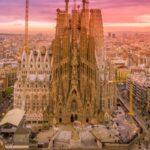 Discover the Marvelous Sagrada Familia: A Must-Visit in Barcelona!
Discover the Marvelous Sagrada Familia: A Must-Visit in Barcelona!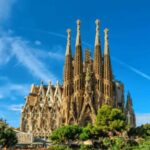 Exploring Sagrada Familia in Barcelona: A Guide to Free Visits
Exploring Sagrada Familia in Barcelona: A Guide to Free VisitsIf you want to know other articles similar to The Remarkable History of Sagrada Familia: A Brief Overview of Barcelona's Iconic Landmark you can visit the category Blog.
Leave a Reply

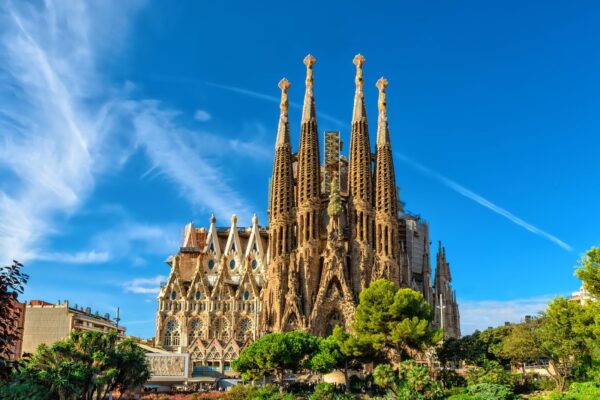
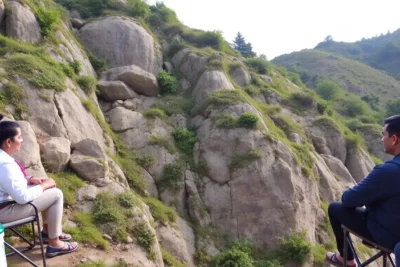
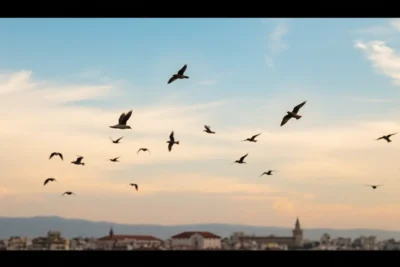



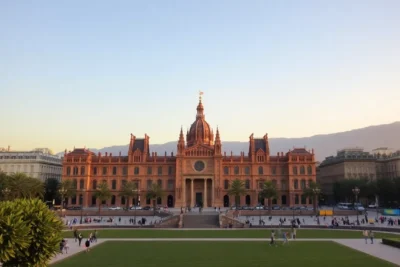

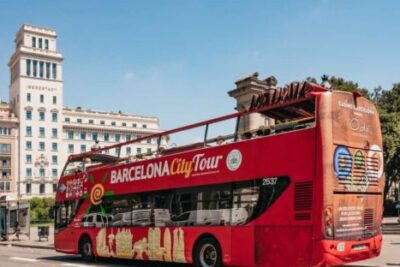
Read more!